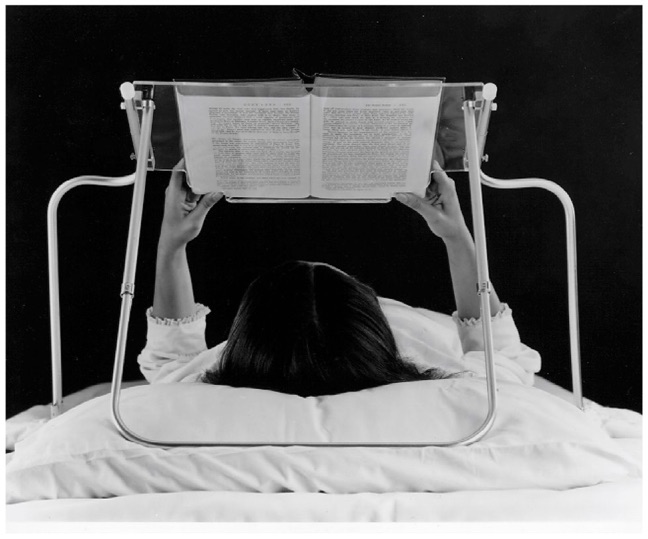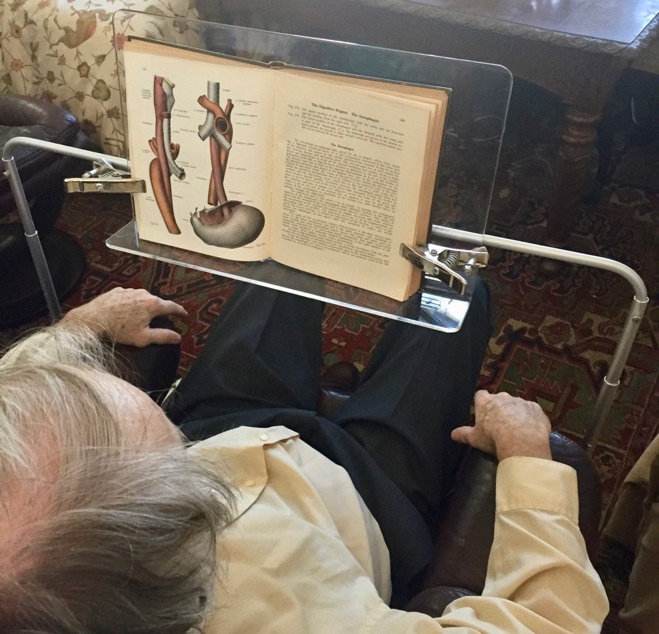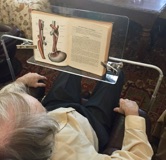
Reading Tool:
Free Phonetic Instruction
Proportional Reading
Code: \&\ = a in schwa; \a-\ = long a;
\o^\ = ^ above o;
\ù\ = oo with concave half-circle above;
“vowel” Consonant e = silent e rule
Sound Files:
Spoken Directions For Free Reading Tool
Call us with any questions: 978-927-9234.
Learn about the other skills needed to read well.
Reading Tool Handout (2 pages, print back to back)
1. a
a has the sound \a\ in apple
a has the sound \o^\ in all
a has the sound \&\ in banana
a has the sound \a-\ in baby
a Consonant e has the sound \a-\ in safe
ai has the sound \a-i\ in sail, nail, pail
ar has the sound \ar\ in ark
ar has the sound \&r\ in liar, pedlar, dollar, cellar
au has the sound \o^\ in August
aw has the sound \o^\ in saw
ay has the sound \a-\ in play
2. b
b has the sound \b\ in bat
3. c
c has the sound \k\ in cat
c has the sound \s\ before e, i, y in center, cider,
cylinder
ch has the sound \k\ in Christmas
ch has the sound \ch\ in chin, church
ch has the sound \sh\ in Chicago
chs has the sound \ks\in monarchs
ci has the sound \sh\ in physician
ck has the sound \k\ in black
cks has the sound \ks\ in racks
cs has the sound \ks\ in relics
4. d
d has the sound \d\ in dog
5. e
e has the sound \e\ in elephant
e has the sound \e-\ in recent
e has the sound \i\ in honest
e Consonant e has the sound \e-\ in these
ea has the sound \e\ in head
ea has the sound \a-\ in great
ea has the sound \e-\ in eat
ed has the sound \d\ in sailed
ed has the sound \t\ in jumped
ee has the sound \e-\ in feed
(e con't)
ei has the sound \a-\ in vein
eigh has the sound \a-\ in eight
ei has the sound \e-\ in ceiling
er has the sound \&r\ in her, fern, gallery, property,
average
eu has the sound \yü\ in Europe
ew has the sound \ü\ in grew
ew has the sound \yü\ in few
ey has the sound \e-\ in valley
ey has the sound \a-\ in they
6. f
f has the sound \f\ in fun
7. g
g has the sound \g\ in game, got
g has the sound \j\ before e, i, y in general, giant,
gypsy
8. h
h has the sound \h\ in ham
9. i
i has the sound \i\ in it, jib
i has the sound \&\ in minimum
i has the sound \i-\ in spider
i Consonant e has the sound \i-\ in pine
ie has the sound \e-\ in chief
igh has the sound \i-\ in light
ir has the sound \&r\ in sir, firm
10. j
j has the sound \j\ in jam
11. k
k has the sound \k\ in kite
ks has the sound \ks\in banks
Vowel kes has the sound \ks\ in rakes
12. l
l has the sound \l\ in let, left
13. m
m has the sound \m\ in man
14. n
n has the sound \n\ in not
15. o
o has the sound \o\ in not
o has the sound \&\ in cover
o has the sound \o-\ in pony, row
o has the sound \ù\ in wolf, woman
o Consonant e has the sound \o-\ in home
oa has the sound \o-\ in boat
oe has the sound \o-\ in toe
oi has the sound \o-i\ in boil, toil
(o con't)
or has the sound \&r\ in actor, collector, doctor
oo has the sound \ü\ in food
oo has the sound \ù\ in book
ou has the sound \ü\ in soup
ou has the sound \ou\ in out
ou has the sound \ù\ in could
ous has the sound \&s\ in dangerous
ow has the sound \ou\ in cow, bow
ow has the sound \o-\ in snow, row (a boat),
bow (and arrow)
oy has the sound \o-i\ in toy
16. p
p has the sound \p\ in pan
ph has the sound \f\ in phone
17. q
qu has the sound \qu\ in quick
18. r
r has the sound \r\ in rat
19. s
s has the sound \s\ in sat
s has the sound \z\ in nose
sc has the sound \s\ in science
sh has the sound \sh\ in ship
si has the sound \ch\ in expansion
si has the sound \sh\ in compulsion
si has the sound \zh\ in emersion
20. t
t has the sound \t\ in rat
tch has the sound \ch\ in catch
th has the sound \th\ in this, that, those
ti has the sound \ch\ in attention
ti has the sound \sh\ in partial
tu has the sound \chu\ in nature
21. u
u has the sound \&\ in cut
u has the sound \ù\ in put, pull
u has the sound \ü\ in ruby
u has the sound \yü\ in music
u Consonant e has the sound \ü\ in rule
u Consonant e has the sound \yü\ in mule
ue has the sound \ü\ in true
ur has the sound \&r\ in curl, burn, fur,
gurgle, curfew, pursue
us has the sound \&s\ in circus
22. v
v has the sound \v\ in victory
23. w
w has the sound \w\ in win
24. x
x has the sound \ks\ in box
x has the sound \z\ in xylophone
25. y
y has the sound \i\ in gym
y has the sound \i-\ in cyclone
y has the sound \e-\ in candy
y Consonant e has the sound \i-\ in type
26. z
z has the sound \z\ in zebra
Learn More About Reading Well & Our 12 Class Course

The Following Subject Matter Is Meant As Review & Practice For
Additional Subjects Which We Have Discussed In Class.
Review of 2-Vowel Sounds, Vowel+R, “ed”
ai has the sound \a-i\ in sail, nail, pail
ar has the sound \ar\ in ark
ar has the sound \&r\ in liar, pedlar, dollar, cellar
au has the sound \o^\ in August
ay has the sound \a-\ in play
ea has the sound \e\ in head
ea has the sound \a-\ in great
ea has the sound \e-\ in eat
ed has the sound \d\ in sailed
ed has the sound \t\ in jumped
ee has the sound \e-\ in feed
ei has the sound \a-\ in vein
ei has the sound \e-\ in ceiling
eigh has the sound \a-\ in eight
eigh has the sound \i-\ in height
er has the sound \&r\ in her, fern, gallery, property,
average
eu has the sound \yü\ in Europe
ey has the sound \a-\ in they
ey has the sound \e-\ in valley
ie has the sound \e-\ in chief
ie has the sound \i-\ in tied, lied, died
igh has the sound \i-\ in light
ir has the sound \&r\ in sir, firm
oa has the sound \o-\ in boat
oe has the sound \o-\ in toe
oi has the sound \o-i\ in boil, toil
or has the sound \&r\ in actor, collector, doctor
oo has the sound \ü\ in food
oo has the sound \ù\ in book
ou has the sound \ü\ in soup
ou has the sound \ou\ in out
ou has the sound \ù\ in could
ous has the sound \&s\ in dangerous
oy has the sound \o-i\ in toy
ue has the sound \ü\ in true
ur has the sound \&r\ in curl, burn, fur,
gurgle, curfew, pursue
Common Suffixes:
ance, ence
ant, ent
able, ible
ing
ed
es
s
tion
cion
ly
ty
y
ness
full
ous
Problematic Phrases:
the thing that
who were
you your
sweat a great deal
up your gown
through the
they thought that he
and I am glad
false faith
out of
Common Words with Same Spelling, But Two Different Pronunciations and/or Meanings, often different parts of speech:
read
lead
bow
live
desert
present
row
These few words are often mispronounced by the computer voice.
Different Ways Punctuation Intervals Relate Within A Sentence:
Simple list: of items, emotions, verbs
Who is talking, about to talk, or just talked, and how
Adjective or adverbial phrase beginning with a word ending in “ing”
Apposition
Exclamation, Command, or Question
Time sequence: before, after, once upon a time, then, now
Location explanation
Main thought with subject, verb and usually an object
Cause and effect: because, due to
Corollary: as a result
Logic: premise and/or conclusion
Exception, or In addition, or despite
Example: for example
Brief interjection, usually within hyphens
Numbered or lettered list of similar points
Additional detail about someone or something: often begins with pronoun like who, which, or that
Avoid Making or Getting “Duped” Or “Taken In” By Logical Fallacies
The 18 Bad Reading Habits, Easily Corrected. The Following Bad Reading Habits Are Easy & Quick To Fix:
Projection
Not Decoding. Not Checking that Printed Letters
and Your Corresponding Sounds Match Up.
Cognitive Dissonance
Not Limiting Guessing to Choice of Different Sounds
From the Same Letter Combinations
Perseveration
Physically Shaking or “Attacking” the Screen
Making Reversals on Two and Three Letter Words
Machine Gun Reading; Not Pausing at “Commas”
Semi-Colons and/or Periods.
Adding an “s” Sound to the End of Words
Stuttering
Pre-Reading
Not Backing Up and Re-Reading When You Hear an
Inner Voice Telling You That You have “messed up”.
Not Reading Fluently; Not Reading All the Words to the
first “comma” or “semi-colon” Smoothly, and then
Pausing Briefly Before Continuing On, Similarly, to the
End of the Sentence.
Uses Of Auditory Memory
-
1.Make sure your reading is making sense; back up and reread if your auditory memory is not making sense.
-
2.Answer simple questions, by repeating sections of the
audio memory of what you just read.
-
3.Provide a model of how to read the next line fluently.
-
4.Provide the sound component in the movies you make as you read.
-
5.Provide a model of silent reading experience: no whispering, moving lips, or reading out loud; hear your inner voice.
-
6.In rare moments of very deep personal discovery, inspiration, and creativity, your Inner Voice (Auditory Memory) will act as a talking partner in discussion with your Real Self.
How To Keep From Falling Asleep When You Read.
Easily Fixed Causes Of Reading Mistakes
-
1.Letters are too small.
-
2.Text is too dark.
-
3.Text is too close or too far from your eyes.
-
4.Text is not parallel with the line between your eyes.
-
5.You need to wear reading glasses.
-
6.Not pausing enough at commas, semi-colons and periods.
How To Overcome Subvocalization, Whispering And Lip Movement, And Start Hearing An Inner Voice. Read The Introduction And Watch All Seven Movies.
How To Build Your Vocabulary While Reading
The 23 Basic Comprehension Skills
Overview Of This Course. Learn Where You Have Been And What Lies Ahead For You In This Course.
-
1.We teach 1on1 in groups where everyone gets individual instruction throughout the class. This makes quality instruction affordable for all, as well as being compatible with existing High School and Adult Literacy classes, and enabling Distance Learning and Program Outreach.
-
2.Students only need an iPod touch and keyboard to do this program at home, or in groups at school or at adult literacy centers. This is affordable by all.
-
3.The controls and operations learned in class are the same ones used independently at home, or elsewhere.
-
4.This is a 12 class program of interactive computer voice and text, based on reading great literature.
-
5.All the course material is on the Internet at our site, and available for free, anytime of day or night. This includes our progression of specially formatted great literature.
-
6.We start with decoding, automaticity and fluency, and overcoming the 18 bad reading habits. Then we move on to increasing comprehension in four different ways. Students get comfortable reading a sentence at a time. This concludes the first part of the course.
-
7.In the second part of the course, we work on increasing speed and comprehension by overcoming subvocalization and lip reading, and by learning how to hear an inner voice as one reads silently. We also work on concept mapping and building vocabulary.
-
8.As we go through this course from start to finish, we progress from reading a phrase at a time, to reading a punctuation interval at a time, to reading a sentence at a time, and finally to reading a paragraph at a time, with instruction at each level.
-
9.In this process we move from reading out loud before hearing the computer voice, to reading silently with the computer voice (at normal reading and speaking speed), to reading silently ahead of the computer voice (at speeds 350-500 wpm and up).
-
10.At this point students are able to use our technology to read any article on the Internet with Computer Voice at good speed and with excellent comprehension, as they continue to develop transferrable skills.
Order and Content of Our 12 Lecture Course
WHAT IS TAUGHT/LEARNED AT EACH COGNITIVE INTERVAL
Level One (One Word at a Time)
1. Learn about large type, and how to adjust font size.
2. Learn about vertical peripheral vision.
3. Learn about enlarging or shrinking font size, if possible on your device.
4. How specific help for Dyslexia, Irlen Syndrome, and Macular Degeneration works.
5. Learn how to read vertically, with or without sound.
6. Learn how to avoid falling asleep when reading, and how to adjust background and lighting.
7. Learn about proper reading posture.
Level Two (A Phrase at a Time)
1. Learn how short direction words are followed by longer object words.
2. Learn how preposition phrases create questions and answers.
3. Learn how to read more than one word at a time, for first graders.
4. Learn how to prevent stuttering.
5. Learn Echo technique (for developmentally delayed students).
6. Learn Clue and Read technique for Autism: hear section then read one word at a time.
7. See yourself projecting, and learn how to stop.
8. See yourself perseverate, and learn how to stop.
9. Learn how to stop “wiggling” and “punching at” words.
10. See yourself adding letters or syllables that aren’t present.
11. Fill in gaps in Structured Phonetics if necessary.
12. Help for Delayed Audio Processing.
13. Learn how to read out loud before sound.
Level Three (A Punctuation Interval at a Time)
1. Help for being overwhelmed by too much text at a time.
2. Additional help for Delayed Audio Processing.
3. Improve Fluency.
4. Reread second time with fluency, if stumbled, or got stuck.
5. What is auditory memory?
6. Learn how to answer questions with Auditory Memory.
7. Learn how to use auditory memory to check meaning; reread if necessary.
8. Understand the Questions and Answers in each Punctuation Interval.
9. Continue to read out loud before sound, but fluently.
10. Hear the music in each sentence.
11. Learn how to make pictures of visual text.
Level Four (A Sentence at a Time)
1. Learn how punctuation Intervals relate to each other.
2. What are the basic 10 types of relationship, including four types of sentence and four types of list.
3. See the big Question and Answer in each sentence.
4. Learn how to connect separate images into a movie.
5. Learn how to add auditory memory and thinking about Q&A to make a full movie.
6. Learn how to answer questions by playing back the movie you have created.
7. Read silently with sound.
8. Watch 6 movies about overcoming subvocalization.
9. Learn how to read just ahead of sound, pausing briefly on larger words, then at punctuation points.
10. Learn how to use your peripheral vision to read proportionally to sound, at any speed. Proportionally means longer time spent on longer words and pausing at the end of punctuation intervals and sentences, just as in speech, regardless of speed, even at 350-500 wpm. and higher.
11. Learn how to pause and then continue the sentence, repeating the sentence if necessary.
12. Learn how to change voice speed.
13. Learn how to look up word, and build a vocabulary file without any typing.
Level Five (A Paragraph at a time)
1. Learn about Choice of one sentence at a time in Paragraph, or whole paragraph at a time.
2. Learn how sentences relate to each other.
3. Learn about the hierarchy of meaning: key thought.
4. Learn how to identify the key word of each paragraph.
5. Learn how the sentences in the paragraph relate to this key word.
6. How to build a vocabulary file.
7. Be sure to check out the graphics and animations.
8. Learn to re-read paragraph asking questions, and answering before hearing.
9. Learn how to pause whenever confused and then continue on; or select rest of paragraph to be read.
10. Learn how to copy notes without any typing.
Level Six (A Chapter at a time)
1. Learn how the Key words of the succeeding paragraphs relate.
2. Build a mind map.
3. Check your place in outline of chapters and chapter sub-titles.
4. Use of classical music.
5. Learn how to use a copy of the book’s Outline.
6. Learn about dictating mind map as you read and create it.
Additional Subjects
1. Dictionary Course: How to Use
2. Vocabulary Course
3. Audio Editing
4. How to Format Text
5. Use of Digital Recorder for Writing
-
6.Dictation Skill
View iOS Controls.pdf (print this out, 2 pages back to back)

You Can Not Read Or Concentrate If You Are
In Pain Or Discomfort.




Sample Response for Parents Wanting SAT/ACT Help for Their Son or Daughter



